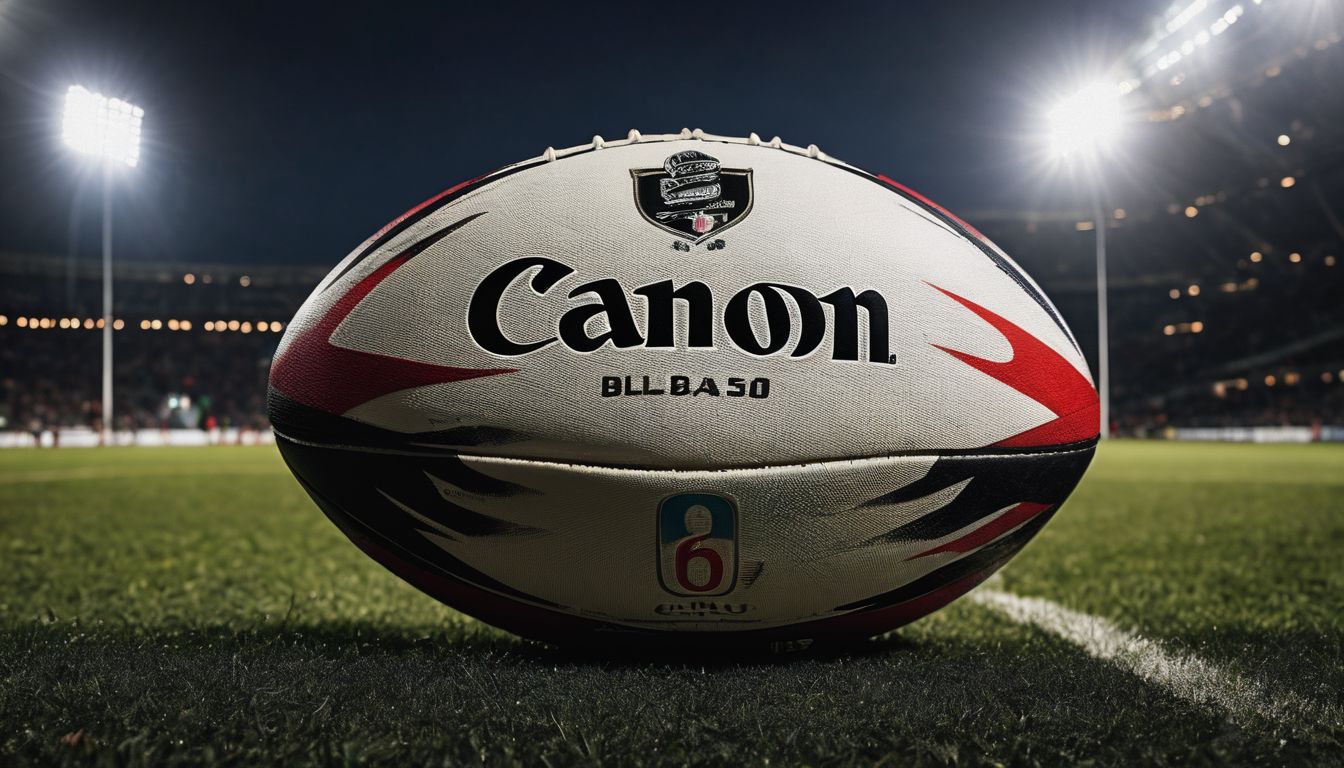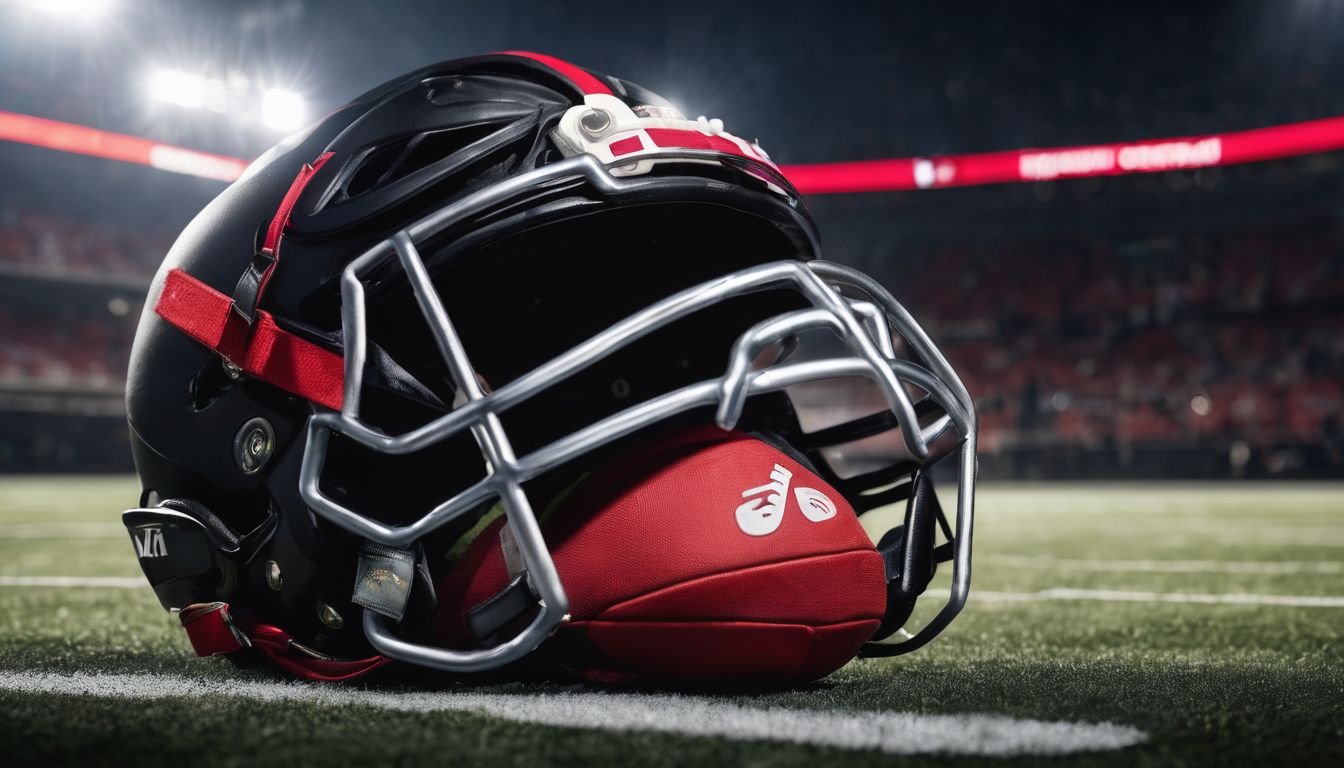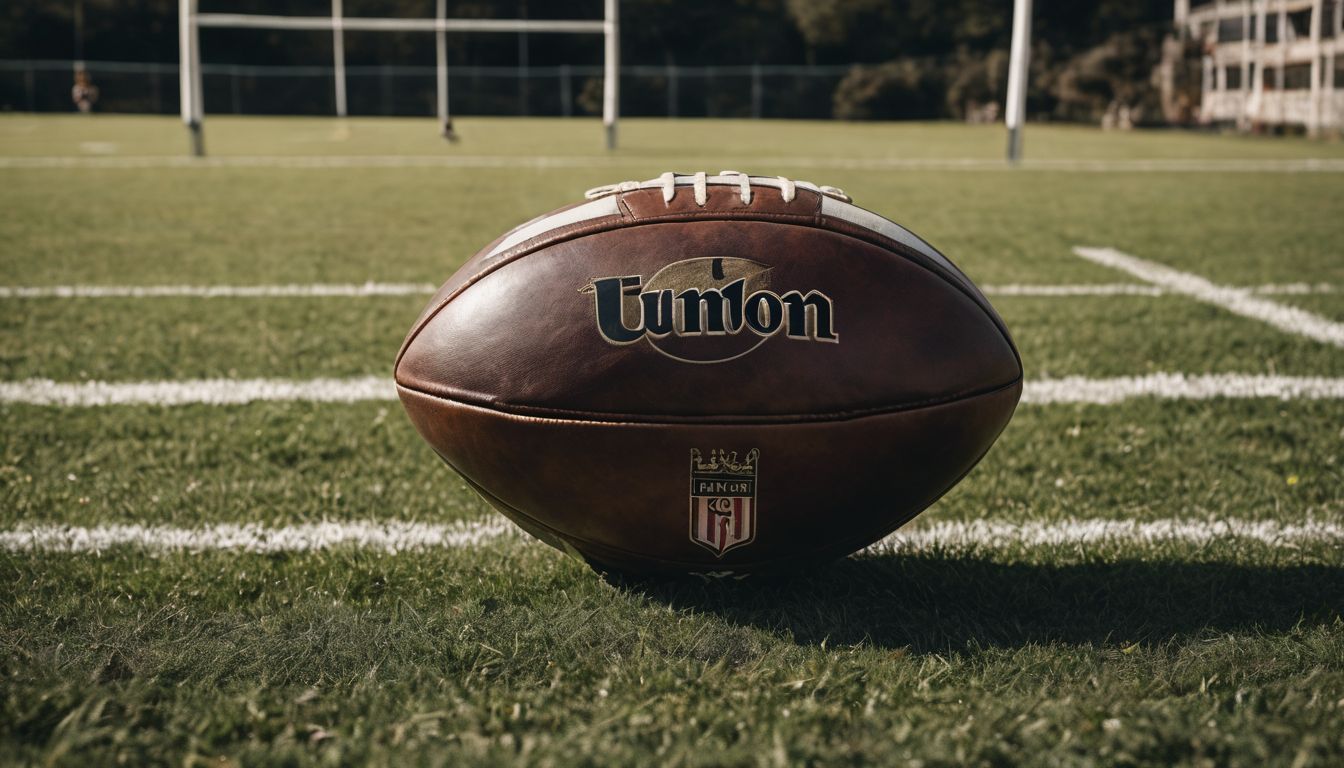Ever found yourself puzzled during a rugby match when the ball gets kicked behind the dead ball line? Well, that’s where the 22-metre drop-out comes into play. This blog will clear up your confusion and explain how this restart method keeps the game moving.
Discover the rules and tactics of this key moment in rugby union – read on for all you need to know!
Key Takeaways
- The 22-metre drop-out in rugby union is a restart played from the defending team’s 22-metre line, typically after the ball has been grounded or made dead in their in-goal area.
- Performing a correct 22-metre drop-out requires the ball to travel at least five meters forward and offers teams a chance for possession and strategic play.
- Misconduct during this play, such as not reaching the required distance, leads to an advantageous scrum for the opposing side.
- There are calls from players and coaches for rule changes to make this aspect of play fairer, including options for quicker restarts or different positions when taking a drop-out.
- Distinguishing between a goal-line drop-out and a 22-metre drop-out is essential; each has specific scenarios where it applies within rugby matches.
What is the 22-Metre Drop-Out?
The 22-metre drop-out is a rule in rugby league where the defending team restarts play with a drop kick from their own goal line. It is awarded when the attacking team kicks or knocks the ball dead within the defending team’s in-goal area.
Explanation of the rule
In rugby union, the 22-metre drop-out kicks into action when the ball crosses over a team’s dead ball line under specific conditions. Defenders are responsible for executing this restart from their own 22-metre line.
To make it valid, they must ensure the ball travels at least five meters forward; if not, play stops and they must retake the drop-out.
The rules dictate that this type of drop-out cannot happen if a player on defence purposefully takes or passes the ball across their own dead ball line. Instead, different consequences come into play depending on how the ball was handled last by that team.
As soon as a defending player grounds an unsuccessful penalty goal or dropped goal attempt in their ingoal area or makes it dead there, game-play resumes with a new 22-metre drop-out provided by them.
Waiting for an official cue such as the referee’s whistle isn’t necessary here – players can act swiftly to get things moving again without delay. This element introduces strategic depth to rugby gameplay, letting teams potentially regain control and counter-attack quickly after absorbing pressure from opponents’ kick attempts at goal.
When it is awarded
A 22-metre drop-out is awarded when the ball has gone over a team’s dead ball line, resulting in play being restarted. This method is used to allow the defending team an opportunity to regain possession and restart play from their 22-metre line after the attacking player grounds or makes the ball dead in-goal.
The defending team can use this as a strategic chance to reorganise and create a defensive strategy that could potentially lead to regaining control of the game.
In scenarios where an unsuccessful penalty goal or dropped goal attempt occurs and is either grounded or made dead by the defending team in in-goal, it results in play being restarted with a 22-metre drop-out.
Purpose of the 22-metre drop-out
The purpose of the 22-metre drop-out is to allow the defending team to restart play after the attacking team has either carried or passed the ball over their dead ball line, without conceding a try.
This provides an opportunity for the defending team to regain possession, relieve pressure, and potentially launch a counter-attack from their own 22-metre line. Additionally, it serves as a method of fair recompense for unsuccessful attempts at goal by providing an opportunity for teams to reset and strategically position themselves on the field.
The 22-metre drop-out plays a crucial role in ensuring continuity in the game while preventing unfair advantages from being gained by either team. It adds an element of strategy and skill as teams must decide whether to kick directly into touch or aim for distance when taking the drop-out.
How to Perform a 22-Metre Drop-Out
The 22-metre drop-out is performed by the defending team after the attacking team has grounded the ball in their own in-goal area. The player taking the drop-out must kick the ball from their own 22-metre line towards or beyond the opposing team’s 10-metre line.
The process
The process of performing a 22-Metre Drop-Out involves the following steps:
- The defending team must take the drop-out from their 22-metre line.
- A player from the defending team can use either a punt kick or a drop kick to restart play.
- The drop-out must travel a minimum of five meters from the defending team’s 22-metre line.
- Once the ball has been kicked, it is open for all players to chase and contest possession.
- There are no restrictions on who can catch or play the ball once it has been kicked.
Proper technique
To perform a 22-metre drop-out with proper technique, follow these essential steps:
- Begin by positioning the ball on the defending team’s 22 – metre line.
- Execute a controlled run – up to ensure distance and precision while striking the ball.
- Focus on making solid contact with the ball to achieve height and distance.
- Drive through the ball with your foot, propelling it forward at an optimal angle.
- Maintain composure and stability throughout the entire kicking motion.
- Keep an eye on your teammates’ positioning to exploit potential turnover opportunities.
- Stay aware of opposing players’ movements to prevent counter-attacks after the drop-out.
Differences Between Goal Line Drop-Out and 22-Metre Drop-Out
The 22-metre drop-out is awarded when a player is tackled or grounded in the ingoal area, while the goal line drop-out occurs after a defending player touches down on their own try line.
Both result in a kick from the defending team, but each has different consequences and scenarios where they are used.
Scenarios where each is used
Understanding when to use a 22-metre drop-out versus a goal-line drop-out is crucial in rugby. Each scenario dictates a different restart, affecting how teams can regain control and momentum. Below, we’ll explore these scenarios in detail.
| 22-Metre Drop-Out | Goal Line Drop-Out |
|---|---|
| Awarded if the ball is grounded by the defending team after an unsuccessful penalty or drop goal attempt. | Executed by the defending team when the ball has been held up in the in-goal area. |
| Occurs when the ball is kicked into the in-goal area by the attacking team and then made dead by the defending team. | Used if an attacking player is tackled and carried into the in-goal area by a defender. |
| Taken when an attacking kick, excluding a penalty or drop goal, goes dead in the in-goal area without being touched by the defending team. | Comes into play when the ball is forced by the attacking team but no try is awarded due to a prior infringement. |
| Seen when an attacking player knocks the ball forward into the in-goal area and the defending team subsequently grounds it. | Occurs when the defending team prevents a try by grounding the ball in their own in-goal after an attacking player has fumbled or knocked on. |
| After the ball is touched by an attacker and then goes into touch-in-goal or over the dead ball line, a 22-metre drop-out is awarded. | Not applicable if the defending team deliberately carries or passes the ball back over their own dead ball line. |
Utilising correct restarts like the 22-metre drop-out can provide strategic advantages. It allows teams to clear their lines and potentially regain possession further up the field. Now let’s delve into the controversies surrounding the 22-metre drop-out and how it impacts the game.
Consequences of not performing correctly
Incorrectly performing a 22-metre drop-out can result in the opposing team gaining an advantageous position on the field. If the drop-out does not reach five meters from the defending team’s 22-metre line, it will be deemed as not correctly performed and lead to a scrum awarded to the opposition.
Moreover, failing to execute a proper drop-out may allow the opponent to regain possession easily and put additional pressure on the defending team’s defensive line.
Not adhering to the rules for a 22-metre drop-out could also lead to conceding points. If an unsuccessful penalty goal or dropped goal attempt is grounded or made dead in-goal by the defending team without executing a correct restart, it results in play restarting with another 22-metre drop-out.
Controversies Surrounding the 22-Metre Drop-Out
Players and coaches have criticised the 22-metre drop-out, citing its complexity and potential for unfair advantage. Some have suggested changes to the rule to address these issues.
Criticism from players and coaches
Players and coaches have critiqued the 22-metre drop-out, stating that it does not always provide a fair advantage to the defending team. Many argue that it gives too much control to the attacking team, especially when restarting play from this position.
Suggestions for rule changes have been put forward to address these concerns and ensure a more balanced approach in restart play.
Looking at potential revisions highlights ongoing discussions about how to improve rugby union gameplay dynamics.
Suggested changes to the rule
Scrum-halfs and fly-halves have suggested that the defending team should have the option to take a quick 22-metre drop-out instead of waiting for opponents to get behind the offside line.
This could add an element of surprise and help teams regain possession faster, creating more exciting opportunities for counter-attacks. Another proposal is allowing players from the kicking team to stand closer to the 22-metre line when taking a drop-out, enabling them to gain better field position or potentially launch longer kicks downfield.
These changes could inject more dynamism into the game and make restarts even more strategic.
Additionally, some experts advocate for awarding a scrum rather than a 22-metre drop-out if an unsuccessful penalty goal attempt goes dead in-goal by the defending team, providing a different way to restart play that could lead to distinctive tactics from both teams.
Conclusion
Understanding the 22-metre drop-out is vital in rugby union. It provides a method to restart play when the ball goes over a team’s dead ball line. The defending team must take the drop-out from their 22-metre line, making it a strategic opportunity to regain possession and restart play efficiently.
Differentiating between a goal-line drop-out and a 22-metre drop-out is crucial for players as they have varying scenarios of use and consequences if not performed correctly. The controversies surrounding this rule, with criticisms from players and coaches, suggest potential changes on the horizon for this key aspect of the Laws of the Game in rugby union.
FAQs
1. What does a 22-metre drop-out in rugby mean?
A 22-metre drop-out happens when the ball is grounded in the ingoal area by the defending team and they then restart play with a kick from their own 22-metre line.
2. When is a team awarded a 22-metre drop-out?
Teams are awarded a 22-metre drop-out after an opponent’s unsuccessful penalty kick, field goal attempt, or if they touch down the ball within their own ingoal area.
3. How do players perform a 22-metre drop-out?
Players perform a 22-metre dropout by dropping the ball onto the ground and kicking it as soon as it bounces, before it crosses the 22-meter line.
4. Can you score directly from a 22-metre drop-out in rugby?
No, you cannot score directly off of a try rugby or tackle rugby; however, you can earn points through other plays that follow after successfully completing the dropout.
















